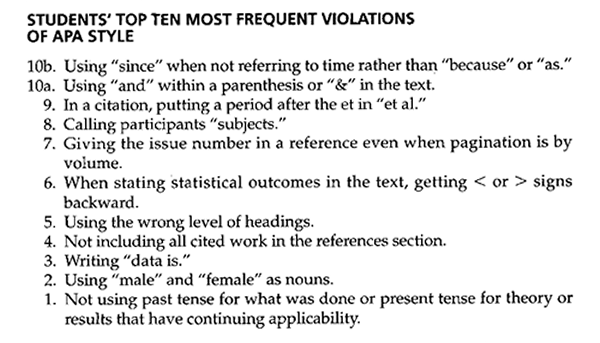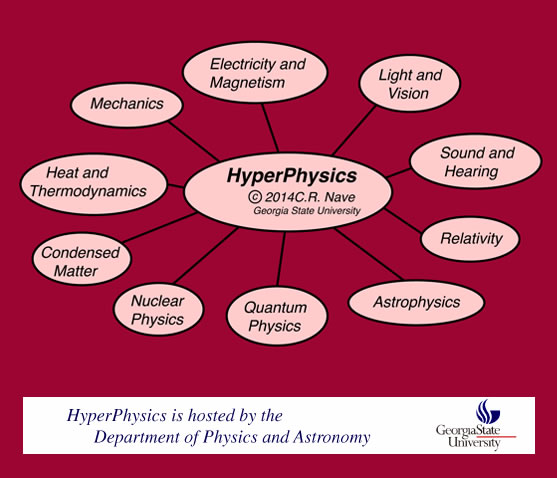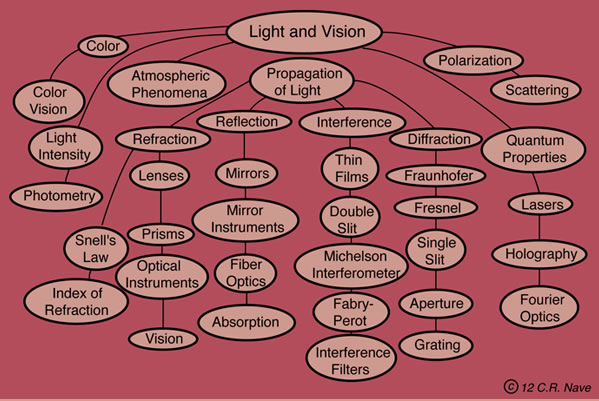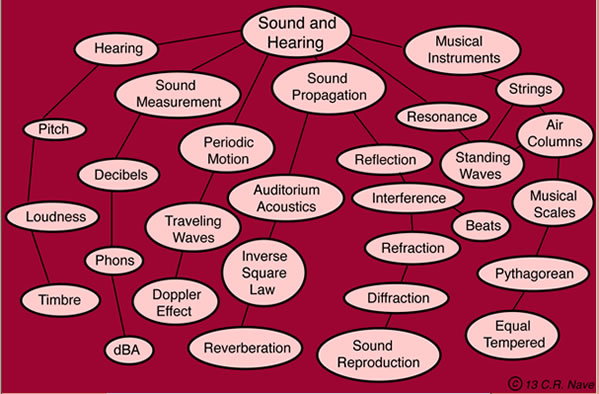Three Sources to Keep Handy
- Details
- Last Updated: Sunday, 23 August 2015 10:59
- Written by Dr. Donald H. Mershon
Summary: Students in the field should recognize that certain basic sources are particularly important: an accepted publication manual, advice on correct English usage, and multiple references for relevant areas of underlying science. In the case of perception, these latter topics would certainly include some aspects of physics.
Writing is hard work. Writing well is harder yet. There are, of course, many and varied sources of advice on how to achieve the effects you want, when you write. The following are your Author-Guide's selections for some basic choices. Where helpful, you will find some brief comments or reviews to introduce you to each item.
Included for each item, you will also find ways in which you can obtain a hard copy or a digital version of the information being offered. For example, one can directly visit some sources on-line or can purchase a stand-alone DVD of the current website. In other cases, one must obtain copies directly from the publisher or by way of the standard on-line sources (such as Amazon.com). Kindle e-versions are often available, so that you can keep your reference sources on your computer, laptop or tablet.
Publication Manual
American Psychological Association (2010). Publication Manual of the American Psychological Association (6th ed.). Washington, DC: Author. Available in a Kindle electronic edition: May 2013.
To order: APA Order Department
P.O. Box 92984
Washington DC 20090-2984
Tel: (800) 374-2721; email: This email address is being protected from spambots. You need JavaScript enabled to view it.
Also available at the APA website: www.apa.org/books/
In the U.K., Europe, Africa, and the Middle East, you may contact the following:
American Psychological Association, 3 Henrietta Street
Covent Garden, London WC2E 8LU England
The first source (and usually the most difficult for new students in psychology to master) is, unfortunately, also the most critical. Although it is possible to find summaries of the many rules for organizing your written papers (to satisfy a class assignment or for submission to a journal), sooner or later you will need to consult a "publication manual." For most fields of social science (including psychology), this source will be the APA Publication Manual published by the American Psychological Association.
In addition to describing the organization or structure for many different types of paper, the APA Publication Manual provides the rules for how to reference the materials upon which your own work is based. Many examples are provided, to show exactly how one should refer to previously published work – in a journal, book, magazine, etc. – as well as the best ways to provide references for sources that you found on-line. Beware that although creating the proper citations for prior theories/research is a crucial aspect of good scholarship, it is often a difficult task to master.
The following list from a textbook written by Dr. David Martin will illustrate just how easily one can stumble over the rules. He presents it as his "…..top-ten list of commonly made mistakes, á la David Letterman." (Hence, the count-down reverse order.) You will note that he has cleverly decided to extend his lesson by tucking an extra mistake into his list.
Figure 1
Figure (and preceding quote) from Martin, D. (2008).
Doing psychology experiments, 7th ed. Belmont, CA: Thomson Wadsworth. P. 286.
By permission of the author.

It is also worth mentioning that, although most psychology students will have had one or more classes in statistics and research methods by the time they really begin to need the APA Publication Manual, the source cited in the caption for Figure 1 is itself an excellent text on how to do research in psychology. If you have not yet studied this topic, or just want a good refresher, your Author-Guide recommends it.
Help with correct English usage
Brians, Paul (2013). Common errors in English usage, 3rd ed. Portland, OR: William, James & Co. Available as a website at: http://public.wsu.edu/~brians/errors/index.html Also available in a Kindle e-book version.
Below is an excerpt that epitomizes the value of having Common Errors in English Usage close-at-hand when writing. Although students in psychology are probably among the most likely to confuse the various meanings of "affect" and "effect" – simply by the frequency with which these terms arise in the field – please note that Paul Brians has also provided exceptionally clear explanations for the spelling and use of hundreds of other words and word-pairs. It is highly recommended that you keep it beside you, or on your digital device, if you wish to write clearly and avoid faux-pas.
Affect/Effect
There are five distinct words here. When “affect” is accented on the final syllable (a-FECT), it is usually a verb meaning “have an influence on”: “The million-dollar donation from the industrialist did not affect my vote against the Clean Air Act.”
Occasionally a pretentious person is said to affect an artificial air of sophistication. Speaking with a borrowed French accent or ostentatiously wearing a large diamond ear stud might be an affectation. In this sort of context, “affect” means “to make a display of or deliberately cultivate.”
Another unusual meaning is indicated when the word is accented on the first syllable (AFF-ect), meaning “emotion.” In this case the word is used mostly by psychiatrists and social scientists—people who normally know how to spell it.
The real problem arises when people confuse the first spelling with the second: “effect.” This too can be two different words. The more common one is a noun: “When I left the stove on, the effect was that the house filled with smoke.” When you affect a situation, you have an effect on it.
Less common is a verb meaning “to create”: “I’m trying to effect a change in the way we purchase widgets.” No wonder people are confused. Note especially that the proper expression is not “take affect” but “take effect” – become effective. Hey, nobody ever said English was logical: just memorize it and get on with your life.
The stuff in your purse? Your personal effects.
The stuff in movies? Sound effects and special effects.
– Brians, P. (2013). Common errors in English usage, 3rd ed. Portland, OR: William, James & Co.
Sources for background information – such as physics
Hyperphysics -- a website available at: http://hyperphysics.phy-astr.gsu.edu/hbase/hph.html
and available for purchase as a DVD. Also available via the appropriate iOS App for iPhone, iPad and iPod.
To order: Carl R. (Rod) Nave
Department of Physics and Astronomy
Georgia State University
Atlanta, GA 30302-4106
The study of perception requires a surprising amount of knowledge about both physical and biological sciences. The final source recommended by your Author-Guide covers aspects of physics. (It is "left as an exercise for the student" to search out useful equivalent websites on other topics as needed.)
Of course, one can often gain the most complete understanding from completion of a well-taught college/university course. Sometimes, a good secondary school AP course can do the job. However, as a review for some topics in physics, or as an accessible starter source for topics that are needed – without much warning – Hyperphysics is very useful.
The following figures show the organization of the Hyperphysics website. Note the wide scope of topics overall (Figure 2). Selecting the appropriate sub-topic within the site's overall organization will lead to topics relevant to vision or hearing (see Figures 3 and 4). As the name of the site implies, digging down through the categories within categories will provide definitions, explanations, equations, etc. for such issues as the measurement of light, basic optics, color science, the measurement of sound, architectural acoustics, musical scales, and so forth.
Figure 2
Overall structure of the Hyperphysics website

Figure 3
Structure of Hyperphysics material on light/vision

Figure 4
Structure of Hyperphysics material on sound/hearing

If you've read this far, then you're on the right track. Explore the sources. Half of becoming (or being) a good scientist is having a breadth of knowledge that extends well beyond one's immediate project. Learn about the fields that provide the underpinnings of psychology, especially those important for your own field of psychology. Learn how to write effectively. Learn how to give others credit for the work they have done and the ideas they have offered.






